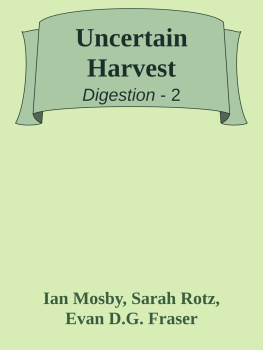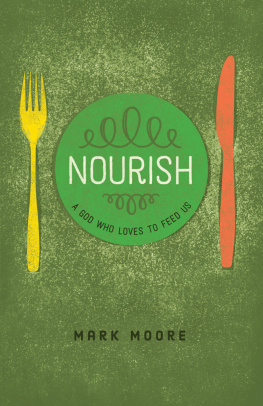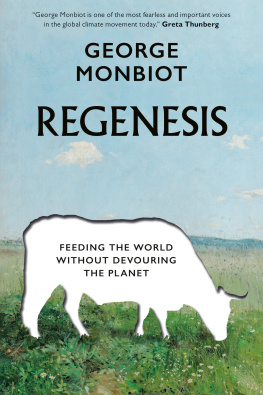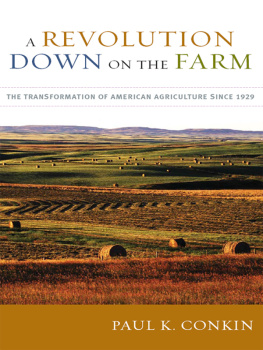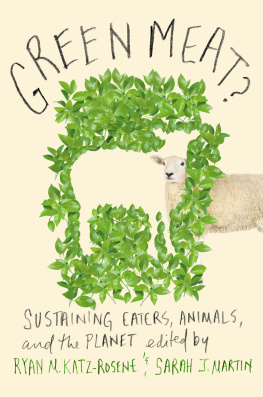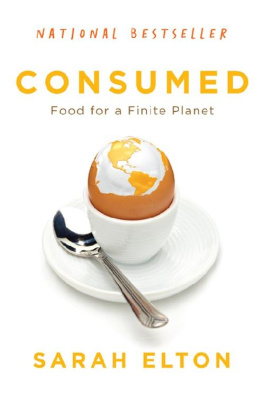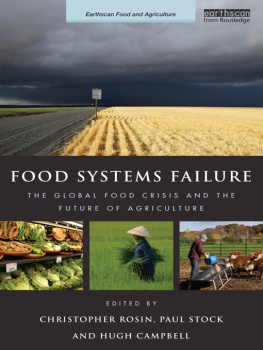

Matt Reynolds
THE FUTURE OF FOOD
How to Feed the Planet Without Destroying It

Contents
About the Author
WIRED is the worlds most authoritative and respected publication reporting on the emerging trends, ideas and technologies shaping our world. Our mission is to tell the stories of the people who are driving this change and to understand its impact on business, society and individuals. WIRED has become synonymous with informed and intelligent analysis of these transformational forces and the significance of them for industries and individuals and is a consistently reliable predictor of change.
Matt Reynolds is a senior editor at WIRED UK.
Introduction: A planet at a crossroads
In May 1968 a Stanford University professor published a book warning that the world was spiralling towards irredeemable disaster. The battle to feed all of humanity is over, read the opening line of The Population Bomb, followed by a prediction that the next two decades would be blighted by global famines that would lead to the deaths of hundreds of millions of people. Before its publication the books author, Paul Ehrlich, was barely known outside the narrow world of entomology, where he was lauded for his studies detailing how butterflies evolved alongside flowering plants. The publication of The Population Bomb co-written with his wife Anne, who remained uncredited on its cover would turn its author into one of the most prominent doomsayers of the time.
At its heart, Ehrlichs thesis was seductively simple: more people were being added to the planet than could possibly be fed, and so the only solution was to limit the number of people being born. It was an argument that went all the way back to the eighteenth-century economist Thomas Robert Malthus, but Ehrlichs paperback married these ancient fears about planetary overcrowding with growing environmental concerns. Aided by its authors relentless promotion, The Population Bomb was a breakout hit. Ehrlich became a frequent guest on the US talk show The Tonight Show, where he would discuss the books advocacy of birth control and mass sterilisation with the shows host, Johnny Carson, in front of an audience of millions. His appearances pushed the book up best-seller charts and it would eventually be reprinted more than 19 times. For Ehrlich, there was no question that humanity was headed towards disaster. It was simply a question of how soon.
There was just one problem. Ehrlichs predictions would prove to be completely incorrect. Rather than stalling, food production in the second half of the twentieth century increased dramatically propelled upwards by the development of high-tech versions of ancient crops, new tractors and farm machinery, improved irrigation and the increased use of fertilisers. In 1961 an average field of wheat produced 1.09 tonnes of crop per hectare. By 2000 that same hypothetical plot of land was producing two-and-a-half times as much food. In Latin America and India parts of the world that Ehrlich predicted would be decimated by famine the increases were even more dramatic. Between 1961 and 2000 in India the yields per hectare of wheat and cassava more than tripled, while those of potatoes, barley and bananas more than doubled. In Mexico, potato and barley yields tripled per hectare, while wheat, corn and banana yields doubled.
All the while the worlds population as Ehrlich feared kept shooting upwards. In 1960 there were 3.03 billion humans on the planet. By 2000 that number had more than doubled to 6.14 billion. In 2019 that figure was less than one in ten. Human ingenuity has opened the doors to a new era of abundance, allowing us to skip past Malthuss trap and unlock the planets potential to feed billions.
This abundance, however, has come with its own set of problems. As fields have become more productive and countries wealthier, so the environmental footprints of our diets have ballooned to staggering proportions. Half of all Earths habitable land is now used for agriculture, putting at least 28,780 species at risk of extinction, according to data from the International Union for Conservation of Nature. Land isnt the only resource that agriculture is gobbling up: 70 per cent of freshwater drawn from aquifers, streams and lakes goes into agriculture. That freshwater, in turn, is polluted by agricultural chemicals that leak from the land back into the environment. In the summer of 2014, for example, excess fertiliser running from fields into Lake Erie fed toxic blooms of algae that turned the water a bright blue-green and forced nearly half a million people in Toledo, Ohio, to stop using their tap water for drinking, cooking or bathing. Even more dangerous is the impact we cant see: on its own, food production is now responsible for 26 per cent of all human-caused greenhouse-gas emissions. At the same time agriculture is also one of the biggest victims of the climate crisis. In Bangladesh hectares of once-thriving rice paddies are being abandoned as salty water from rising seas makes its way into river deltas, dehydrating and killing crops. The climate crisis is, at its most fundamental level, a crisis in how we produce food. We cannot tackle the challenge of climate change without reducing the impact that our food has on the planet.
Although his direst predictions never came true, Ehrlich was right about one thing: the demand for food is continuing to go up. The population growth rate has slowed since the late 1960s, but by 2050 there will be around 9.7 billion humans on the planet about two billion more than there are today according to projections by the United Nations.
This is the central dilemma facing the planet today: how can we feed billions more people while simultaneously using fewer resources and emitting fewer greenhouse gases? Some look back to the dramatic increases in farm yields in the second half of the twentieth century and see a template there for the future of our food system. Technology helped solve the productivity problem what if we directed those same energies towards the challenge facing the world today? In Silicon Valley, start-ups are growing meat that has never seen the inside of an animal, with the aim of sidestepping the huge carbon footprint that comes from growing crops to feed livestock. In greenhouses in the Philippines and the UK, researchers are experimenting with creating new crop varieties resistant to drought, salt or disease, which could grow in a world altered by climate change.
Others argue that the solution cant just involve producing more it will require using less. Farming start-ups are hoping that ultra-precise robots can help reduce the amount of herbicide and fertiliser applied to fields, while people in the fish-farming industry are trying to find new ways of feeding fish that dont deplete our oceans even further. Farmers across the globe are already returning to forms of agriculture that rely less on artificial fertilisers and herbicides, in favour of systems that cycle nutrients from crops back into the soil.
But technology alone can only get us so far. It is not simply the way we produce food that needs fixing, but the very system of food production and distribution itself. Right now, the world produces enough food to feed everyone on Earth yet 746 million people are still severely food-insecure, a figure that is projected to go up in the wake of the Covid-19 pandemic. Part of the responsibility for fixing the food crisis also lies with each of us, the decisions we make about what we eat and how much we waste.
Next page


